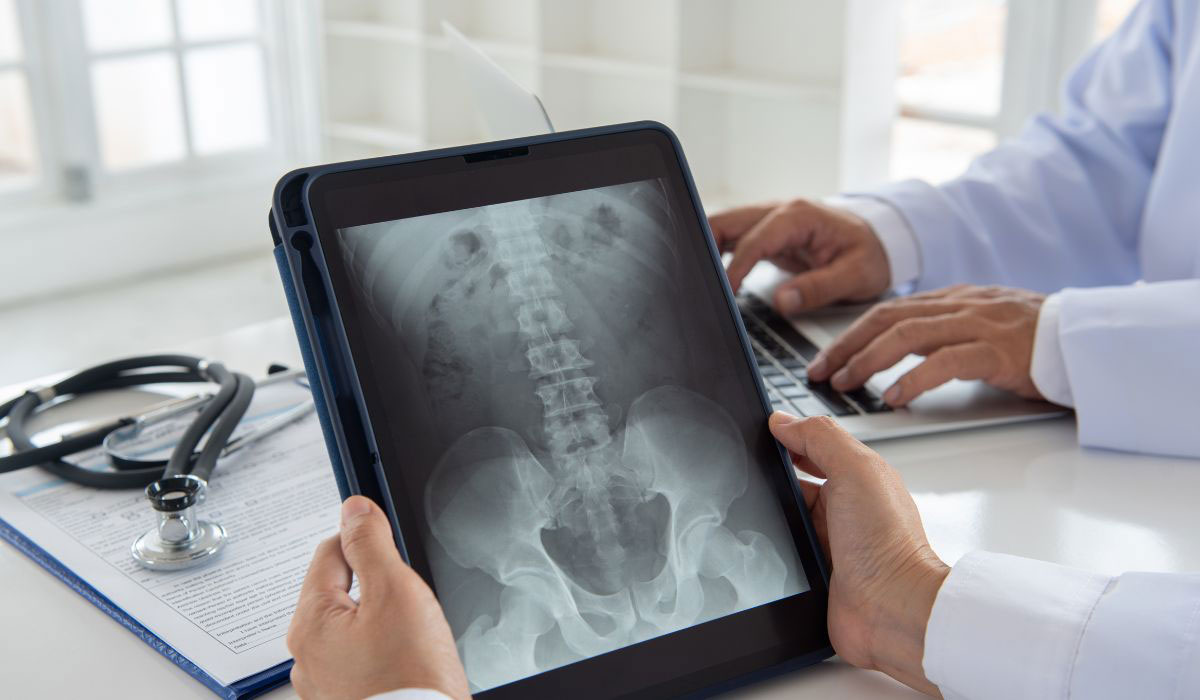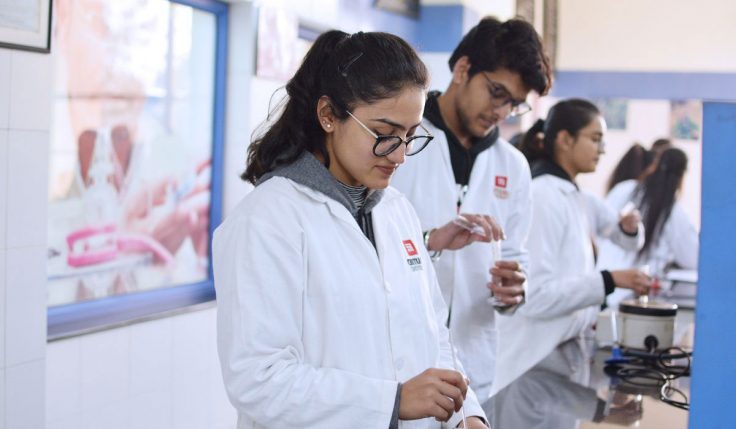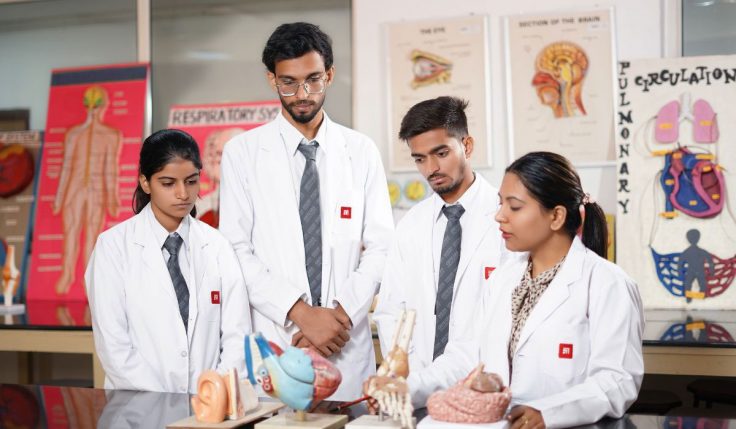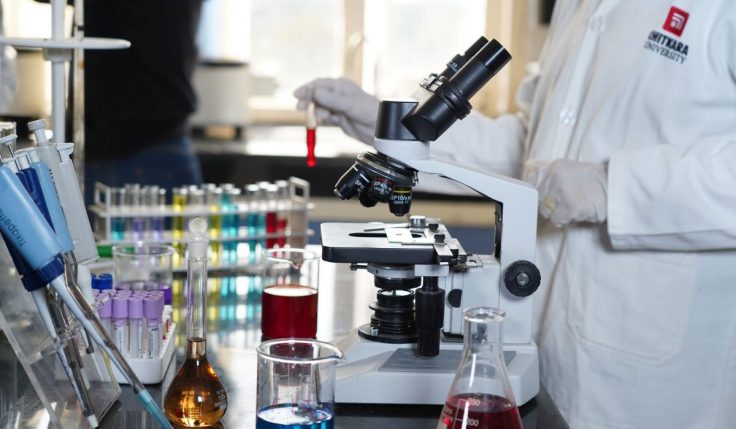Recent developments in radiology and medical imaging technology have revolutionised the way doctors identify and treat a wide range of illnesses. With the rapid integration of technology, radiology and imaging have become more accurate, efficient, and accessible.
Let’s explore how technology is transforming the field of radiology and imaging and discuss the exciting prospects of pursuing a B.Sc in Radiology & Imaging Technology or a B.Sc Medical Radiology & Imaging program.
Evolution of Medical Imaging Technology: Medical imaging technology has evolved significantly, providing medical professionals with powerful tools for visualization and diagnosis. The accuracy and precision of older imaging methods like X-rays, computed tomography (CT), and magnetic resonance imaging (MRI) have improved. Additionally, more recent technologies have gained importance, allowing for improved visualisation of organs, tissues, and physiological processes. Examples of these technologies include positron emission tomography (PET), single-photon emission computed tomography (SPECT), and ultrasound imaging.
Advancements in Image Resolution and Quality: Technological advancements have significantly improved image resolution and quality in radiology and imaging. High-definition imaging enables medical professionals to observe minute details and abnormalities with greater precision. This enhanced clarity facilitates accurate diagnosis, improves treatment planning, and enhances patient care. The use of digital imaging and advanced algorithms further enhances image quality, reducing artifacts and noise for more accurate interpretations.
Integration of Artificial Intelligence (AI) and Machine Learning (ML): Artificial intelligence and machine learning have emerged as transformative technologies in radiology and imaging. AI algorithms can analyze vast amounts of medical imaging data and assist radiologists in detecting abnormalities, quantifying risks, and providing decision support. ML algorithms can learn from patterns and previous cases, leading to improved accuracy in image interpretation and diagnosis. This integration of AI and ML has the potential to enhance efficiency, accuracy, and speed in radiology and imaging workflows.
Remote and Tele-radiology: Technology has facilitated remote and teleradiology practices, enabling radiologists to review and interpret medical images from a distance. This is particularly beneficial in rural or underserved areas where access to specialized radiologists is limited. Through secure networks and telecommunication, radiologists can collaborate with healthcare professionals in real time, providing timely and accurate diagnostic insights.
Three-Dimensional (3D) Imaging and Virtual Reality (VR): Three-dimensional imaging and virtual reality have opened up new dimensions in radiology and imaging. 3D imaging techniques allow for a more comprehensive understanding of anatomical structures and pathologies, aiding in surgical planning and interventional procedures. VR technologies provide an immersive experience for medical professionals, allowing them to interact with medical images and simulate complex procedures.
Radiation Therapy and Precision Medicine: Technology has also greatly influenced radiation therapy, a crucial component of cancer treatment. Advanced imaging techniques and computer-aided planning have made it possible to precisely target tumors while minimizing damage to surrounding healthy tissues. This precision has led to improved treatment outcomes and reduced side effects for cancer patients. Furthermore, the integration of radiation therapy with the principles of precision medicine, such as genetic profiling and personalized treatment plans, has opened new avenues for more effective and tailored cancer care.
Teleradiology and Artificial Intelligence for Efficient Workflow: Teleradiology, combined with the power of artificial intelligence, has significantly improved the efficiency of radiology workflows. With the ability to securely transmit images and data over networks, radiologists can collaborate with colleagues remotely, enabling faster diagnoses and consultations. AI algorithms can assist in automating repetitive tasks, such as image analysis and reporting, freeing up radiologists’ time to focus on complex cases and patient care. This integration of teleradiology and AI streamlines processes reduces turnaround times, and enhances overall efficiency in radiology departments.
Hybrid Imaging Technologies: The combination of different imaging modalities, known as hybrid imaging, has expanded diagnostic capabilities and improved accuracy. By combining functional and anatomical data, methods like positron emission tomography-computed tomography (PET-CT) and magnetic resonance imaging-guided focused ultrasound (MRgFUS) provide more thorough information. Hybrid imaging has proven particularly valuable in oncology, cardiology, and neurology, enabling precise localization and characterization of diseases.
Big Data and Analytics for Research and Population Health: The integration of big data analytics in radiology and imaging has opened up possibilities for research and population health management. By leveraging large-scale datasets, researchers can identify patterns, correlations, and treatment responses. This information contributes to evidence-based medicine, optimizing treatment strategies and improving patient outcomes. Additionally, population health management initiatives utilize imaging data to monitor disease trends, allocate resources, and develop preventive strategies.
By embracing the advancements in radiology and imaging technology, healthcare professionals can deliver more accurate diagnoses, precise treatments, and better patient outcomes. Pursuing a B.Sc in Radiology & Imaging Technology or a B.Sc Medical Radiology & Imaging program equips students with the knowledge and skills to leverage these technologies and contribute to the transformative field of medical imaging. Embracing the future of radiology and imaging technology ensures a fulfilling career that combines cutting-edge technology and compassionate patient care.
Also, read this blog post: The Growth Of Allied Healthcare As A Profession Post COVID
Radiology and imaging are being transformed by the rapidly changing technological environment, which is opening up exciting new opportunities for improved patient care, individualised therapies, and improved diagnosis. Accepting these developments and pursuing a career in radiology and imaging technologies can pave the way for a meaningful and fulfilling career at the cutting edge of medical innovation.






